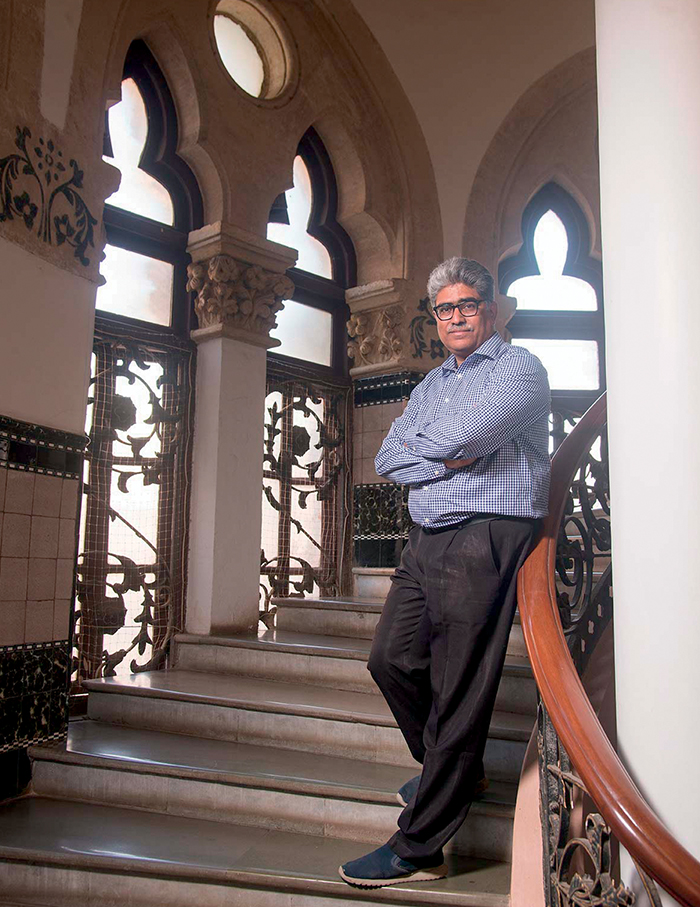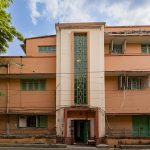Architect Vikas Dilawari, renowned city architect and a specialist in heritage conservation worked on both Bhau Daji and CSMVS for their 150th and 100th anniversary restorations.
Two architectural icons and important landmarks of Mumbai, the Dr. Bhau Daji Lad Museum and Chhatrapati Shivaji Maharaj Vastu Sangrahalaya (CSMVS) recently celebrated their 150th and 100th anniversaries respectively this year.

The Bhau Daji Lad Museaum is located within the botanical gardens in Byculla, one of the oldest areas of Mumbai. This is where important government officials used to live in the British era. It is a city museum focused entirely on Mumbai’s history, culture, peoples and antiquities, interpreting the city though its artefacts and craftsmen.
The oldest museum in Mumbai, the Bhau Daji was established in 1857 by Dr George Birdwood, Sir Jamsetjee Jeejeebhoy, Dr Bhau Daji Lad, the Honorable Jugonnath Sunkersett, and Dr George Buist. Built in the Palladian and High Victorian styles, its displays include maps charting the evolution of Mumbai from when it was a city of seven islands to its growth as a valuable commercial port. The garden has an assortment of statues brought from various parts of Mumbai during the Samyukta Maharashtra Movement of the late 1950s that was instrumental in the creation of the State.
CSMVS with its elegant dome is as much a part of the Mumbai skyline. Located in the historic Kala Ghoda area, part of the erstwhile Bombay Fort, it was earlier called the Prince of Wales Museum.
The CSMVS was built in the Indo-Saracenic style by Scottish architect George Wittet. City luminaries like Sir Pherozeshah Mehta, Sir Ibrahim Rahimtoola and Sir Vithaldas Thackersey had wanted a museum in tune with the strong cultural movement that was taking shape in the Bombay Presidency. They wanted it to actively educate its visitors and not be just a place of display—an ethos that still defines CSMVS.
In 1905, the Bombay Presidency granted a piece of land with the condition that the money for the construction be raised by the citizenry which would also maintain the museum. CSMVS received the UNESCO Asia Pacific Heritage Award for Cultural Heritage Conservation in 2010; in 2018, it was declared a UNESCO World Heritage site, part of the Victorian Gothic and Art Deco ensemble in Mumbai; and in November 2022, it was given the Award of Excellence at the UNESCO Asia Pacific Awards. Bhau Daji won UNESCO’s highest award for restoration work in 2005.
Given their age, both the Bhau Daji and the CSMVS needed structural restoration. Vikas Dilawari, renowned city architect and among the first in India to specialise in heritage conservation worked on both Bhau Daji and CSMVS for their 150th and 100th anniversary restorations.
Dilawari found the Bhau Daji “more of a challenge as the building had not been well looked after in the preceding years. Electrical cables lined the front lobby, trees were growing out of pipes, the etched glass was broken, the façade was a greyish white, and internally, where there was to be gilt, there was orange paint. It was a challenge but we had a lot of archival information.” Tasneem Mehta conceptualized the project and Dilawari executed it, and the team was able to restore the museum to its former glory.
According to Dilawari, skilled carpenters were used for the tall Palladian interiors. “Special care was taken to scrape and discover the original colour scheme and then refurbish it. The challenge of making a few galleries climate-controlled was addressed. The external landscaping was also done in the first phase and in 2012 the rear plaza, which was hardly used, was converted into a functional space.”
As often happens in such restoration projects, it wasn’t just the building that benefitted. Dilawari says, “The project revived dying arts like lime mortar repairs of external facades and internal lime plaster as well as the almost lost arts of gilding, stencil paining, and etching on glass.” The project, conducted on a public-private partnership model, won UNESCO’s 2005 Asia Pacific Award for its comprehensive restoration work.
In contrast to the Bhau Daji, the CSMVS was a younger and better maintained building. Working towards the centenary celebrations, the management had carried out regular restoration work over the years, from space addition in the 1950s to dome repairs in the 1970s and façade restoration in the 1990s. In the 2000s, work started with external repairs, the European paintings storage area, and the conservation laboratory. Work restarted during the lockdown but with a limited workforce, which made the efforts all the more heroic especially when it came to things like erecting an elaborate scaffolding soaring to 110 feet for internal repairs to the dome.
However, taking advantage of the enforced closure, the museum also refurbished the busiest areas—the entrance lobby, staircases, toilets, verandas, the connector block and some key galleries. Special craftsmen were called in for the basalt stone carving so that it matched the original small domes and minarets, as well as for fixing stainless steel dowels for some sections.
Architect Vikas Dilawari took a very comprehensive approach to the restoration of both these structures keeping in focus the Indo Saracenic character and their rich architectural history.
Content and images from various internet resources




GIPHY App Key not set. Please check settings